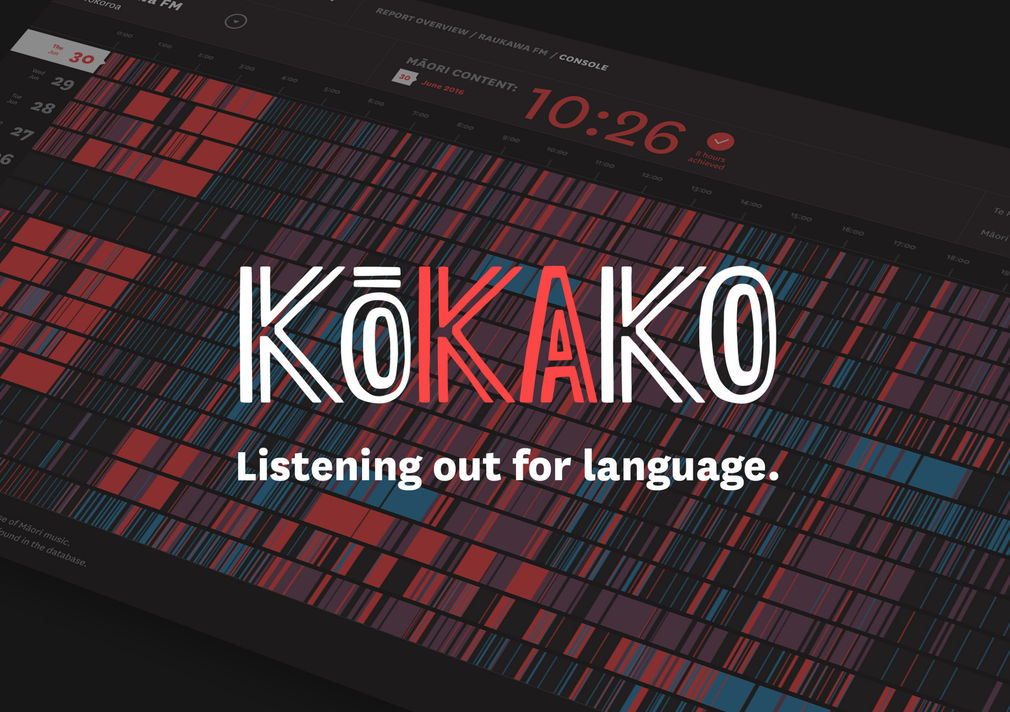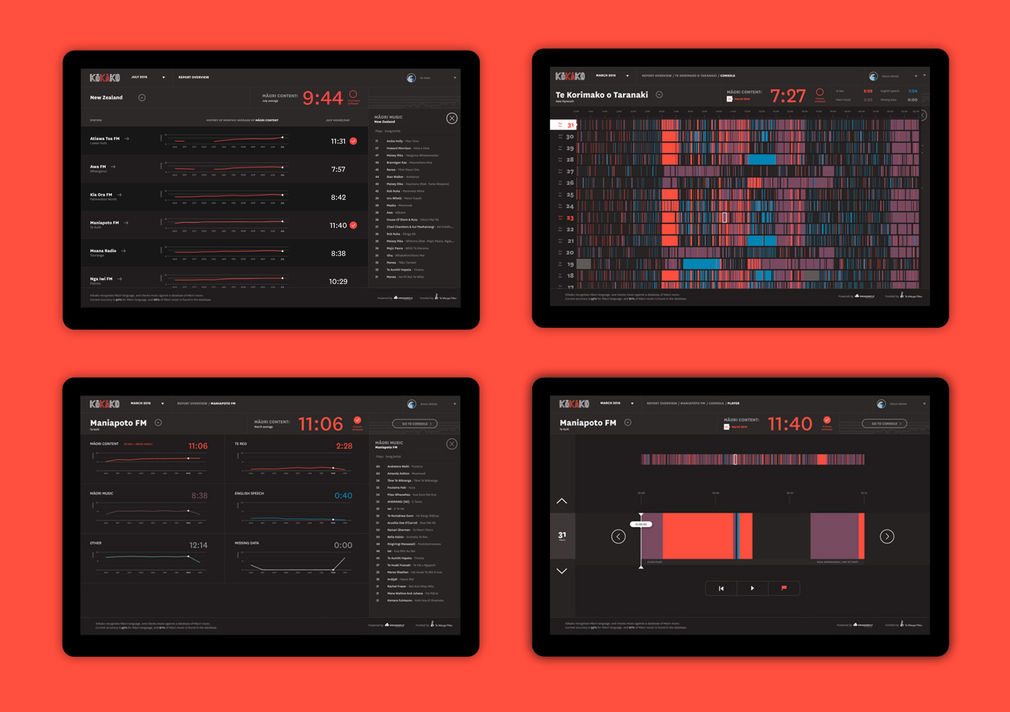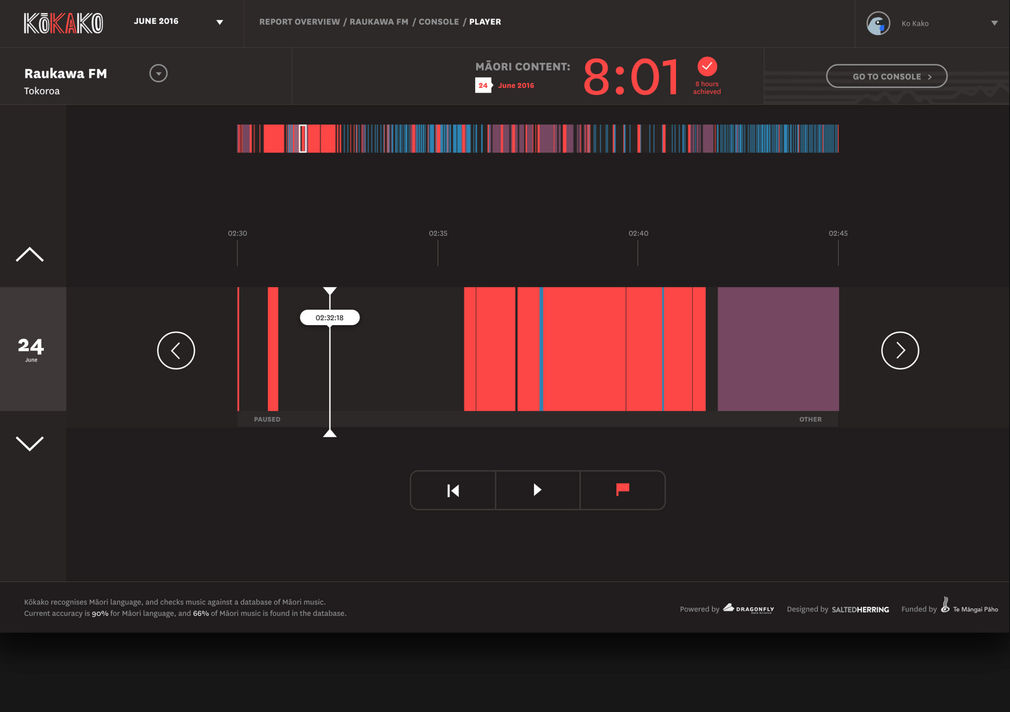The trend for a more bilingual approach in broadcasting has led to a new way of monitoring te reo content. The web-based application Kōkako automatically records the amount and type of te reo Māori in broadcast media, freeing up creativity on air.
Purple Pin Case Study — Interactive
Salted Herring
Kōkako — Language tracking
Background



Te reo funding on iwi radio stations is based on quotas, and for years, the only easy way to track compliance was to set aside blocks of time for te reo content. While this format worked for fluent te reo speakers, it prevented a bilingual style. For people new to the language (presenters and listeners) it can be more natural to mix te reo and English, with the language more easily understood through context. However, manually monitoring quotas around the clock is not practical.
Funding agency Te Māngai Pāho had been wrestling with this issue for some time, when they learnt of a new bird-call recognition software. Wellington-based Dragonfly Data Science had developed a machine-learning application that ‘listens’ to forest sounds, using algorithms to identify and classify different calls. The corollary to language was an exciting discovery. So in 2014, Te Māngai Pāho commissioned Dragonfly and digital agency Salted Herring to develop an application that could track the use of te reo, both spoken and sung.
The resulting software, Kōkako, provides the industry with a greater overview and understanding of language use across media networks. Kōkako provides daily and monthly data analysis and reporting. Language use is made visible (in almost real time) with a striking visual display – live infographics showing how much te reo is being broadcast and at what times, and the proportion of te reo Māori to English spoken.
Kōkako, provides the industry with a greater overview and understanding of language use across media networks.
The value of design was recognised by the team early on. A visual identity was developed first, which then drove the design details of the user interface. “We also wanted the interface to be culturally relevant, and worked closely with Te Māngai Pāho to make sure it resonated with end users,” says Salted Herring creative director Pep Zuijderwijk.


The application interface is designed in an overall dark palette with limited colour accents, to improve usability on radio station screens, allowing the data to ‘shine through’ in readable bands. The colours of the data visualisation represent the different languages picked up in the broadcasts and result in striking patterns – a beautiful reference to some of the pattern-making in Māori visual arts. The user can pull up monthly, weekly, daily or even 15-minute time slots, with the option to play a particular piece of broadcasting and place comments.
“Kōkako is a great application of the powerful new technology of machine learning – in this case recurrent neural networks,” notes Dr Edward Abraham of Dragonfly. “The classification is continuous, and so the system is able to follow speakers as they change language and flip between English and Māori. To ‘train’ the system, a set of manually labelled data is required. Once trained, the system is able to keep classifying new data as it arrives. In principle, Kōkako could be trained to recognise any language or dialect, with reporting customised for specific communities or agencies.”
“Kōkako is a great application of the powerful new technology of machine learning – in this case recurrent neural networks,” notes Dr Edward Abraham of Dragonfly.
The awards judges described Kōkako as a “uniquely New Zealand project in the field of language processing that achieves the critical balance between deep, complex data science and understated, intuitive user experience.” Although not publicly available yet, there has been a lot of external interest in the technology, with its potential application to other minority languages, such as Gaelic.
—Andrea Stevens
www.folio.nz